
Great Blue Portrait
August 16th, 2010
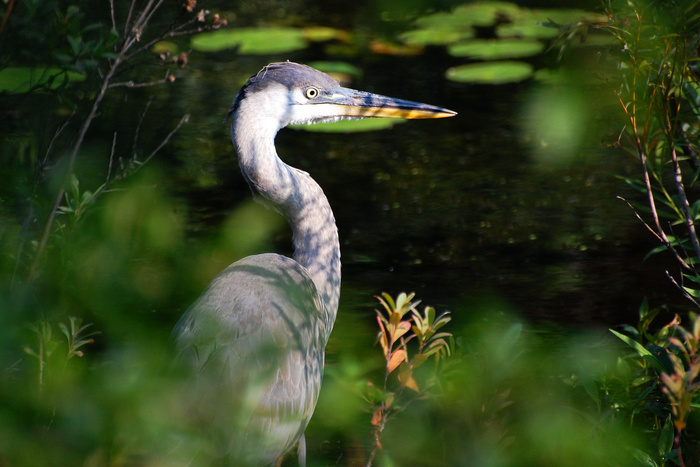
1680x1050 wallpaper
American Redstart
August 13th, 2010
American Redstarts are common at Mud Lake and other places, but the striking black-and-orange adult male is hard to photograph: he tends to perch high up while he sings; if you happen to catch him low, he'll probably flush before you can get a picture, or just stay extremely well-hidden behind multiple layers of foliage. All my best redstart photos have been taken at around this time of year, when bushes, low branches and undergrowth teem with fledglings. They don't seem to have learned to be skittish yet.
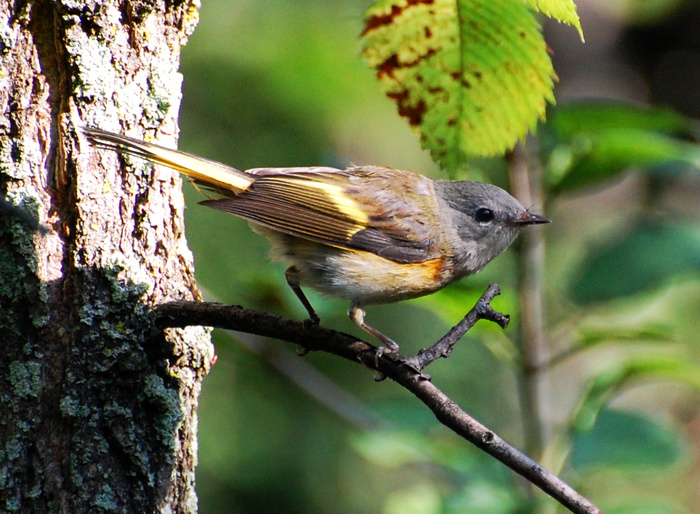
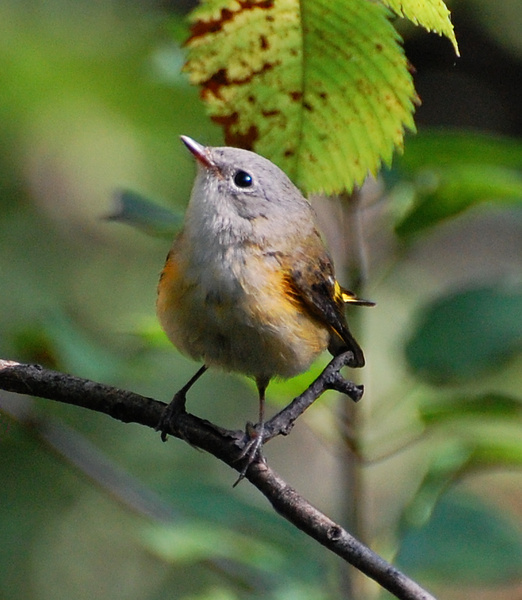
It looked almost luminous when the "flash patch" on his tail caught the sun.

August Bounty
August 11th, 2010
An incredible morning of birding at Mud Lake on Monday. Surprising numbers of fall migrants, for so early in August, plus lots of resident breeders out and about with their fledged young. Plus two special surprises.
All three of Mud Lake's breeding herons were around: a Green Heron flushed from the northeast shore and landed in a small tree, three juvenile Night Herons flushed one by one from a tree on the ridge, an adult Night Heron flew overhead a short while after that, and Great Blues, of course, were everywhere. Two Pied-Billed Grebes were on the pond. (Apparently a whole family group of Pied-Billed Grebes has been seen on Mud Lake since late July, which raises the question of whether they actually bred there. If so they were very secretive about it.) A Cooper's Hawk stirred things up when he flew low over the ridge, triggering a chorus of alarm calls.
Migrant Yellow-Rumped Warblers, Nashville Warblers, Black-and-White Warblers, Rose-Breasted Grosbeaks, a Cape May Warbler, a Northern Waterthrush and a Least Flycatcher were all present, along with abundant numbers of Mud Lake's breeding songbirds, all gathered into mixed foraging flocks, enjoying both late-summer insects and late-summer ripe berries.
Surprise number one took place at sunrise, when I saw an Osprey dive into Mud Lake and come up with a goldfish! It caught the sun, deep golden-red and at least seven inches long, like the kind you see in garden ponds. Someone must have dumped it in there. Its camouflage was, let us say, lacking.
Surprise number two was a long-awaited lifer: aforementioned Northern Waterthrush. This is not a thrush but a ground-dwelling warbler, known for its habit of bobbing its tail up and down as it walks along wooded swamps. Back when I was a beginning birder, I saw what I thought was a Northern Waterthrush and was thrilled to pieces that I had seen my first non-common-as-dirt bird. It was a letdown when I learned that what I had actually seen was a female Red-Winged Blackbird, which is, in fact, common as dirt. So finally seeing a waterthrush for real is a nice bit of closure.
The next morning I came back with camera in hand. And though both the activity level and novelty level were down from Monday (no osprey with goldfish), I still managed to capture some of August's bounty, which I'll share over the next few days.
Starting with this:
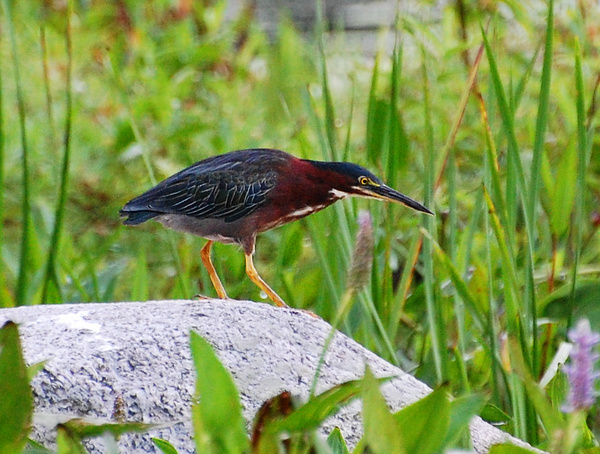
Green Heron
Pink Lake
July 31st, 2010
Hard to believe I've lived in Ottawa all this time and never been to Pink Lake before. Well, I have now! For those of you who aren't locals, this is a stunningly beautiful, deep green meromictic lake in the Gatineau. Note to self: take parents during their visit. With any luck there will even be some fall colors up there by then.
I figured we wouldn't see many birds with so many noisy people around, but it was better than I expected. There was a Black-and-White Warbler, first spotted by Mike, numerous Belted Kingfishers taking advantage of the lake's bounty (at least around the edges, it was teeming with fish), and, most interestingly, a fledgling Brown-Headed Cowbird keeping company with a much smaller bird, a Yellow-Rumped Warbler who was clearly its foster parent!
This is that dastardly bird that I first described in this post. I've seen many cowbirds and I know what they do, but this is the first time I've seen the evidence for myself: the incongruous sight of a tiny warbler tending to a baby twice its size. It's odd that they never seem to smell a rat, not even once their young is practically full-grown and looks nothing like them.
Lord Turtle
July 26th, 2010
I took this at Mud Lake before leaving on vacation. (It then got preempted for about a month.) It's a Snapping Turtle sharing a log with several Painted Turtles. I never realized how threatening Snapping Turtles can look, and it's not just about their size. They're like something out of the Jurassic.

1680x1050 wallpaper
Vacation photos: final round-up
July 23rd, 2010

Common Loon
This was one of the biggest surprises of the week. I saw and photographed him from the dolphin-watching boat, but didn't realize what I had just photographed until I looked at the LCD. Loons are only expected at Outer Banks in winter and migration. This guy was supposed to be on some secluded mountain lake in Canada, not on the Roanoke Sound. I guess he (or she) was a nonbreeder who decided to linger on the wintering grounds.
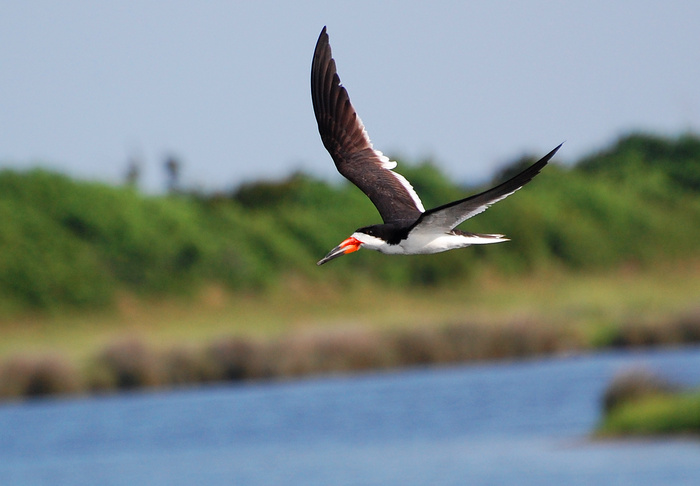
Black Skimmer, wallpaper available
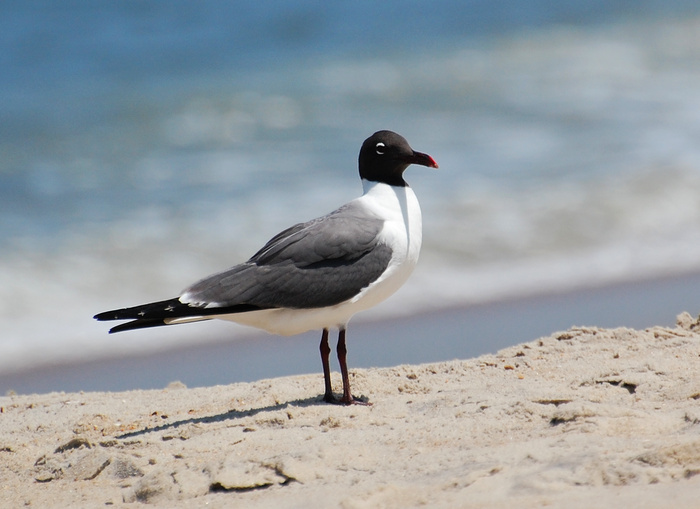
Laughing Gull, wallpaper available
THE Outer Banks gull. They share the beaches with smaller numbers of Herring Gulls and Great Black-Backed Gulls--but I can see both of those back home, so I don't focus my camera on them much. Like Ring-Billed Gulls, Laughing Gulls are quite tame, readily taking handouts from humans.

Common Wood Nymph
An abundant butterfly along the Pea Island boardwalk.

Northern Mockingbird
This is a common species throughout the southeast, but especially common in Outer Banks, I find. They must really like that coastal habitat.
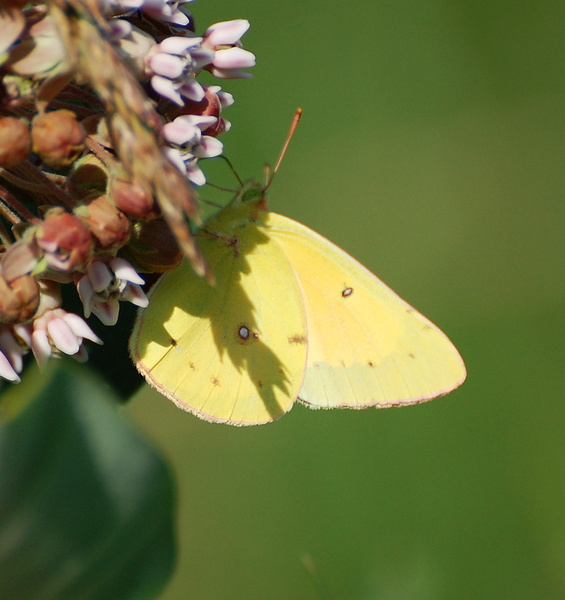
Clouded Sulfur

Silver-Spotted Skipper
( Triplist )
Some odes
July 22nd, 2010
A few interesting odonates (dragonflies and damselflies) from my vacation. The first two were photographed at Alligator River Wildlife Refuge, a place with a huge diversity of dragonflies.

Needham's Skimmer, wallpaper available
An exclusively coastal species that's easily mistaken for the more widespread Golden-Winged Skimmer. In fact, you may have seen me so mistake it if you read this entry within ten minutes of when I first posted it :-)

Blue Dasher, wallpaper available
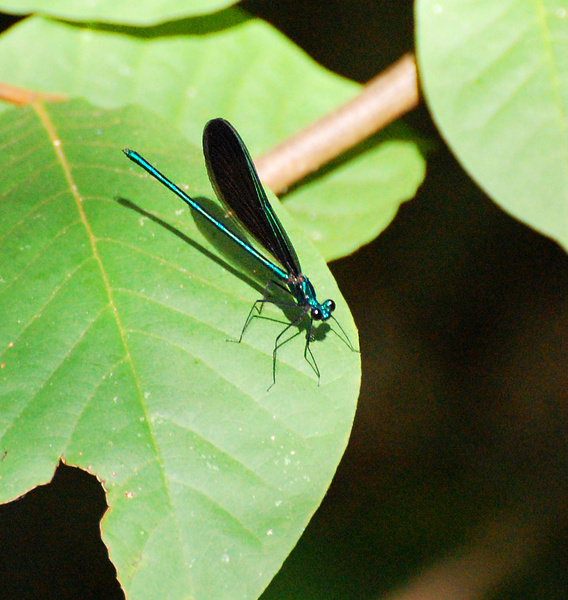
Ebony Jewelwing
I saw this one at Pocahontas State Park in Virginia, in the vicinity of Beaver Lake, and was fairly startled--I'd never seen anything like it before. Turns out it's a type of damselfly. Courtesy of Gillian, I now know we have them in Ottawa too!
Shirley's Bay Adventure
July 21st, 2010
Today I went birding at Shirley's Bay. It's only the second time I've done that, and my first time doing it solo.
Now, let me explain exactly what I mean by "birding at Shirley's Bay." There are trails at Shirley's Bay--nice, publicly accessible hiking trails that you can see on the Greenbelt map. And there's a boat launch and picnic area and so on. But if you're a birder--a serious birder--you're probably not interested in any of that. Here's what you do as a birder at Shirley's Bay:
You park at the end of Rifle Road and walk a short distance to a gate with a big, imposing "Department of National Defense" sign next to it. You go through the gate. You notice signs saying things like "no trespassing" and "danger - active shooting range", and disregard them. Then you waltz past the big sign saying "controlled access area" and "authorized personnel only." Oh, and "you may be searched at any time."
You turn onto a narrow dirt road, thumbing your nose at the two red "NO ENTRY" signs, continue on a ways, and finally, one last sign, "private property" (right next to something about poison ivy), tries to convince you to turn around, but you don't.
You do all this, mind you, after having obtained permission to do so. Still, if it's the first time you've ever done it solo, and you're me, you feel a little lurch in your stomach at every sign. You feel your heart beat. Fast.
You climb up onto the dike. And then...then, you're in heaven.
Kingfishers everywhere. Kingfishers flying right in front of your nose. Common Terns diving. Four Great Egrets (a rare species in Ottawa) out in the water and about three times as many Great Blue Herons. An Osprey flies by. Three deer--two adults and a spotted fawn--come up on the dike behind you, see you, think about it for a minute, and turn and run. And down in the shallows of the river, what you've really come here for: shorebirds. Dozens and dozens of shorebirds. The single best shorebird-watching spot in the entire city.
Just one thing about this mecca. Well, two things. One is the poison ivy. (I went in shorts. I probably shouldn't have.) The other is the ants. I recommend not setting your backpack down while you're on the dike. Because there are ants. Lots of them. They'll swarm up onto it. That webbing that you keep your drink in? They'll get all up in there. Then, when you put the backpack back on, they'll get in your shirt.
And they won't be happy about it.
So, in sum: an adventure! I finally listed Solitary Sandpiper and Pectoral Sandpiper, two lifers that have been a long time coming for me. I've never seen so many Lesser Yellowlegs in one place. I had no idea how noisy and argumentative that species could become in groups--the individuals I saw at Andrew Haydon Park were always quiet and graceful. At Shirley's Bay, it seemed there were so many of them they couldn't get along. The altercations were always in pairs: two birds facing off, staring each other down from an inch away, then leaping and fluttering, kicking at each other. Then more staring. Then more kerfuffle. This would go on until one of them decided that they were more interested in eating than fighting. At which point the other seemed to think "yeah, you have a point" and they both went back to probing the mud.
Like this. (I didn't take that photo--it's from the Ottawa Citizen and was taken by Francine Ouellette--but it's very similar to what I saw.)
I'm looking forward to bringing my camera back to capture those kingfishers.
I would add as a postscript that I love my country. Calling Range Control took some nerve. Because here I am...phoning up the freaking military...to ask them if I can go bird-watching on their property? They're going to tell me to get a life, right? But no. The voice on the other end was friendly. He agreed right away and I could tell he'd heard the request many times before.
This cordial relation between Ottawa birders and the DND is a very nice state of affairs. I hope it lasts.
Black Swallowtail
July 19th, 2010
Some butterflies look prettier from the underside.
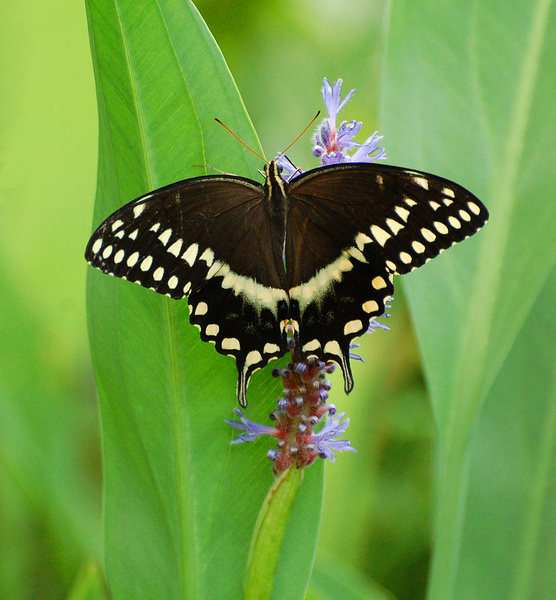

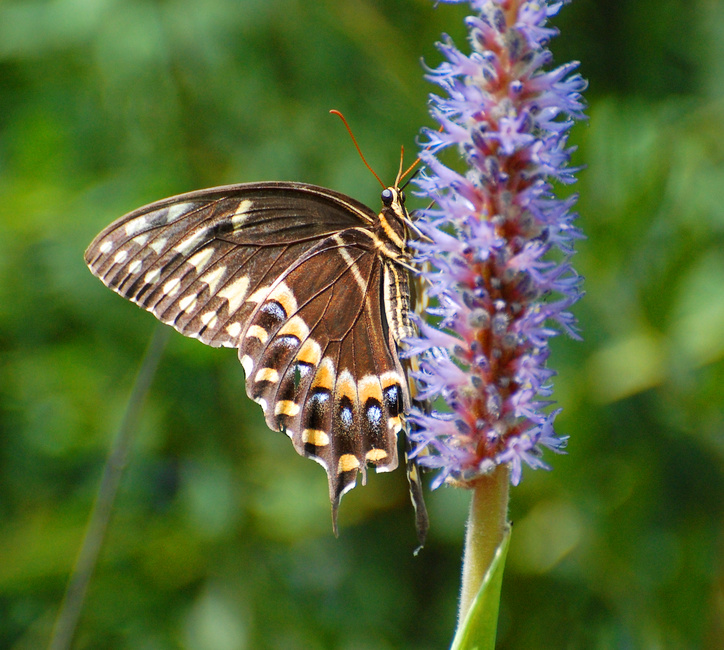
1680x1050 wallpaper
This is a particularly abundant species at Alligator River Wildlife Refuge, which is where these pictures were taken.
Water Snake
July 18th, 2010
I noticed this guy slithering along in the water while I was photographing skimmers at Pea Island. It's either an Outer Banks Kingsnake (an isolated subspecies of the Eastern Kingsnake that occurs only on the barrier islands) or a Carolina Water Snake (also an isolated subspecies.) I don't have the expertise to say which, and I've heard differing opinions from the experts. Feel free to chime in!
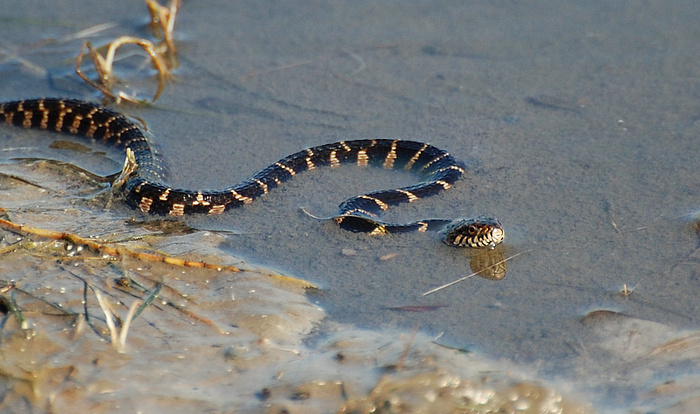
1680x1050 wallpaper
|
